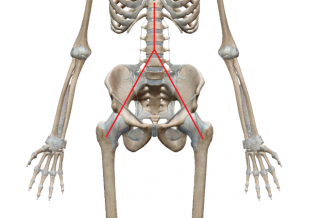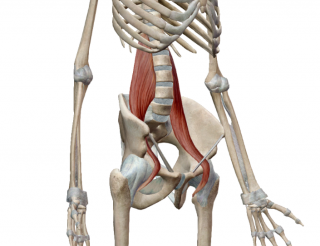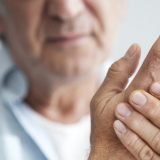The secret of structural mechanics towards the right posture

The secret of structural mechanics towards the right posture
What position is more convenient? Of course, both postures will be uncomfortable, but most of the time, you will feel relaxed and comfortable in a straight, upright position. This is because if you make a triangle structure by opening your legs on both sides, you will distribute the gravity which is pulling down from above your head evenly, and distribute the weight of your body to 1/2 of the base of support of the legs. It’ll be easy. Understanding the dispersion of these forces will help you understand which postures are most effective at distributing the force and maintaining the right posture. In the human body, this structure can be found in the anatomy of the stomach muscles.


Figure 1) Body load and variance of force of two legs. Figure 2) Direction of dispersion of force
The ilopsoas muscle is connected to all lumbar spine and disk, starting from both sides of the last thoracic and last ribs, lumbar spine 1 to 5 as shown in Fig. 2, and the tip of the muscle is attached inside the thigh bone. The ilopsoas muscle is the strongest flexor muscle, which is used to lift the thigh to the front of the chest based on the hip joint, and is the muscle that exerts the greatest power when lifting the low extremity. It is also used when tilting the body to the left or right, or when lying down and lifting the upper body. When the torso is fixed, it is a muscle that produces strong movement, which is also used when turning the thigh outward or pulling it inward. As shown in the side of Fig. 3, this muscle is bent over the pubic symphysis and attached to the inside of the legs, so that the legs can be used as a point of leverage to lift the leg more effectively with less force. Because of this functional aspect, excessive contraction of the ilopsoas muscles creates a forward posture of the pelvis and a position of vertebral dorsiflexion, which may increase the pressure of the posterior spinal joint and increase back pain. In this way, the ilopsoas muscle plays an important role in creating the overall appearance of the waist that is responsible for the central axis of the body.

Figure 3) the ilopsoas muscles at 45 degrees
Is the ilopsoas muscle a primary mover that makes movement only? Anthropologists and researchers, Newman and Brunnstrom say that the main function of ilopsoas muscle is to support and stabilize the body, not the muscles that make flexion extension-bending and tilting. As a simple example, as shown in Fig. 4, the muscles attached to the end of the vertebrae contract to create axial compression, which maximizes the stability of the spine.

Figure 4) Vertical (axial) compression of the vertebrae produced by muscle contraction
The main reason for the good posture of this muscle is the coordination of the ilopsoas muscles. In anatomy, iliacus psoas, and quadratus lumborum are all connected to the diaphragm and fascia. If there is a problem with the ilopsoas muscle itself and the arch of the waist is enlarged and the forward incline of the pelvis is made, the center of gravity of the body mentioned earlier will be further forward, and the upper body will be supported and a naturally appears to be used to tilt the upper body backward and align the whole center by using the flaccid and gypsum muscles.
As a result, the “forced open chest” posture is created, the shoulders go back out, the ribs become wider, excess breathing can occur when breathing, and the head is pulled forward to lower the height again. So, it becomes a natural contraction, and the so-called “turtle neck” that many people worry about. Therefore, those who think that “I cannot maintain exercise and treatment to eliminate the turtle neck posture” should think about the main reason and why there is no change. Focus on your overall posture not only the ilopsoas muscle. The occurrence of a chain reaction in our body due to one of these ilopsoas muscles is also covered in the Journal of Electromyography published earlier this year. It is also an important factor in determining the width of the footsteps. The importance of the pelvis is to protect the organs located near the pelvis, and at the same time to offset the forces transmitted by gravity from the torso with force from the ground through both feet, as shown in Figure 2). Therefore, there are a lot of strong ligaments, and it is the place where the stability of the body should be maintained. If the stability of the body cannot be maintained, it is necessary to make the shoulder or hip flexible and smooth, but in order to compensate for the overall lowered stability of the body, the body’s overall “rigidity” will be created.
Repeating more strongly only contractions produces a whole “rigidity” of the body. As a result, it can lead to the body becoming continuously stiff and also the stabilized elbow, knees and heels may make clicking sounds which shows the instability of the body when trying to fix rigid joints. Do not concentrate on just stretching with ilopsoas muscle, cobra posture, and McKenzie Temple Movement. Do not just focus on strengthening your muscles by running, burpees, leg raising, or squatting. Look at your current posture in the mirror, try to understand the effects of your own ilopsoas muscles on your current posture and try to turn them into their normal function. You will see yourself in mirror with the correct body posture.



